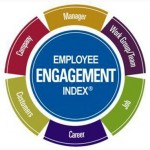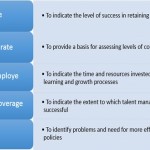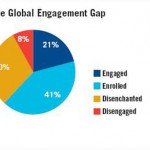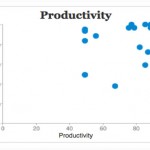Employee Engagement – a key driver of business performance
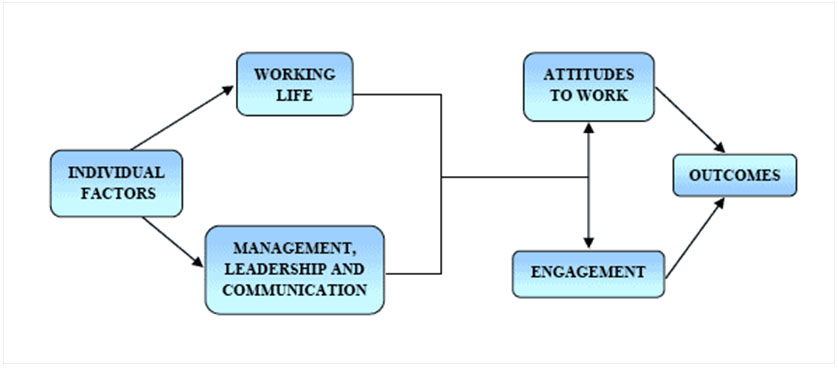 Employee engagement has become in the recent years a hot topic. Although several scholars reported that it has rarely been studied in the academic literature and little scientific evidence is available about its antecedents and consequences (Saks, 2006; Robinson et al, 2004; Macey & Schneider, 2008), research initiatives in this area are on the rise (as illustrated by the number of journal published in the last few years).
Employee engagement has become in the recent years a hot topic. Although several scholars reported that it has rarely been studied in the academic literature and little scientific evidence is available about its antecedents and consequences (Saks, 2006; Robinson et al, 2004; Macey & Schneider, 2008), research initiatives in this area are on the rise (as illustrated by the number of journal published in the last few years).
Alignment between recruitment, retention and engagement is essential due to implications on the organizational delivery capability.
According to a research study documented by Echols (2007) cited in Bux & Tay (2010), “85% of value creation is driven by intangible assets such as people and not by asset on the balance sheet”. Searching and retaining the right talent and most of all, keeping them engaged represents today the key that drives lean organizations forward and sustains business performance in competitive and dynamic market conditions. A report on the American workforce shows that roughly half of all Americans in the workforce are not fully engaged or they are disengaged, leading to what was referred to as an “engagement gap” that it cost US businesses an estimated $ 300 billion a year in lost productivity (Saks, 2006 citing Bates, 2004; Johnson, 2004 & Kowalski, 2003).
What is Employee Engagement?
Many practitioners consider employee engagement a measure that reflects the extent to which employees contribute through their effort and enthusiasm to the success and performance of their organization.
In the same line of thought Crim and Seijts (2006) consider that an engaged employee is a person inspired, fascinated, fully involved, and committed for its work and willing to see the organization succeeding in its mission.
Accordingly, Sacks (2006) associates employee engagement with a sustainable workload, feelings of choice and control, recognition, fairness and justice, a supportive work community and meaningful and valued work.
Robinson et al. (2004) from the Institute of Employment Studies attribute several characteristics to engaged employees:
- Belief in the organization
- Desire to work and make things better
- Understanding of business context and the ‘bigger picture’
- Respectful of, and helpful to, colleagues
- Willingness to go the extra mile
- Keeping up to date with developments in the field
What is takes to raise the level of employee engagement?
According with Robinson et al.(2004), it’s not enough to wish to improve employee engagement, but you need to have strong “building blocks” at the base of your initiative. Here are several aspects that need to be taken into account:
- Good quality line management;
- Two way communication;
- Effective internal co-operation;
- A development focus;
- Commitment to employee well-being;
- Clear accessible HR policies and practices, to which all managers from all levels are committed.
- Bux, R.S. and Tay, A. (2010), The Relationship of Psychological Empowerment, Talent Engagement and Talent Outcomes, International Review of Business research Papers, Vol 6, No. 1, pp. 215-227
- Crim, D and Seijts, H. G. (2006): What engages employees the most or, The ten C’s of employee engagement, Ivey Business Journal, March/April
- Macey, W.H. and Schneider, B. (2008), The meaning of Employee Engagement, Society for Industrial and Organizational Psychology, Vol. 1, pp. 3-30
- Robinson, D., Perryman S. and Hayday, S. (2004), The Drivers of Employee Engagement, a study supported by the Institute of Employment Studies Research Network, Report 408
- Sacks, M. A. (2006), Antecedents and consequence of employee engagement, Journal of Managerial Psychology, Vol. 21, No. 7, pp. 606-619
- Lockwood, N.R. (2007), Leveraging Employee Engagement for Competitive Advantage: HR’s strategic role, Society of Human Resource Management
- smartKPIs.com (2010), Employee Engagement Index, smartkpis.com Blog
- smartKPIs.com (2010), Gallup’s Customer Engagement Index, smartkpis.com Blog
- smartKPIs.com (2010), Employee engagement and organizational performance, smartkpis.com Blog

Tags: Human Resources performance, Institute of Employment Studies, KPI, Performance Measurement

